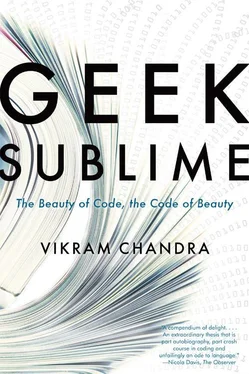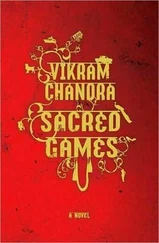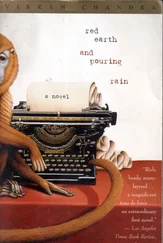nothing but the assertion that X is a free, self-luminous entity, and although this entity is still associated with objective features such as its body, its recognition cannot be reduced to an objectification, for it does not consist in a mere identification of the other’s consciousness with the other’s body, but precisely in the realization that this entity transcends objective features such as its body insofar as it is self-luminous. 20
The question, then, is — what was in it for the people who may have been objectified by some upper-class Tantrics, or who we read as objects across the gap of centuries? We are stumped, of course, by the famous silence of the subaltern. The Tantric texts are written from a male viewpoint, and no doubt by the well heeled and comfortable. Or at least this is partly true — some of the revealed Tantric texts are in a strange Sanskrit sprinkled with grammatical errors, archaic styles, and Prakrit derivations, which suggests they “may have been written by non-brāhmins or brāhmins far from the Sanskritic heartland.” 21Faced with this discomfiting problem, other scholastically inclined Tantrics engaged in exegesis argued that the gods are allowed to make grammatical mistakes, or indulge in linguistic crookedness for pleasure.
But we can be certain from history and the present that kings were not the only ones to practice Tantra. The great and mighty and rich of course loved Tantra — since the rites brought power and potency to the practitioner, allowed him or her to dominate and possess, the mediaeval royals built numerous temples for Tantric gods and goddesses, and either openly or in secret worshipped, sacrificed, and believed. Several dynasties built temples at Kamakhya, the most powerful Tantric site of all. But we know that then as now, the worshippers at Kamakhya, the practitioners who conduct their rituals inside and outside these imperial constructions, come from every caste, every class.
Similarly, Hugh Urban’s work on the Kartabhajas, a modern sect particularly active in the nineteenth century, shows how the poor can mobilize esoteric belief, secrecy, and rituals — inducting parakiya or extramarital sex — to find autonomy and self-respect. According to their own tradition, they were founded by a wandering fakir, Aulchand, who sometimes proclaimed himself a madman; their members came from the “lower orders, mainly from the depressed castes, untouchables, Muslim peasants and artisans.” According to a nineteenth-century report, “Very secretly this movement has become powerful … The majority [of the Kartabhajas] are lower class and female.” 22All of these people practiced a kind of equalizing meta-religion which appeared precisely at the onset of colonialism, as the East India Company began to impose land reforms that displaced millions of peasants to the cities. These new members of the urban proletariat hijacked the language of markets and mercantilism to construct a sandhabhasha , a cryptic “intentional language” in which they both mocked the powerful and celebrated themselves:
I will tell you a funny story,
some news about a king.
In his city,
rows and rows of merchants
crowd the roads.
In the Central Market,
in that great landmark,
they import, they export,
they buy, they sell,
all twelve months long.
And in the warehouse
they wheel and deal
over tares great and small.
…
[The king] takes no taxes,
no tariffs, no gifts,
and so the traders worship him.
The goods pile up from the sea-trade,
but he excuses all duties
and gathers respect instead.
Listen, listen,
I’ll tell you more—
Here there is no brokerage,
no greedy commission-mongering,
no forced labour.
The moon is his companion,
and this king is Kalki
the Avatar. 23
The Kartabhajas disregarded caste and creed. A journalist attended one of their melas or fairs in 1848 and reported, “We were amazed. For Brahmins, Sudras, and non-Hindu classes make no distinctions regarding their own food, and eat and drink here together: nowhere before had I seen or heard such a thing!” 24
The upper classes of the time were engaged in their own movement to eradicate caste, to reform Indian culture according to Western notions of progress and rationality, and the Kartabhajas caused much debate among them. The Kartabhajas were sometimes admired, but as often they aroused shame and fear. Their insistence that the body was sacred and their practice of ritual sex outside of marriage provoked rage and disgust. There was a tendency to dismiss them as a degenerate Tantric cult — a famous upper-class poet described the Kartabhaja lineage as “a ghost in a field strewn with rotten carcasses; an ugly old whore in a place full of rubbish and dung.” 25
But the Kartabhajas sang, “Tell the madman that people have become mad; tell the madman that they do not sell rice in the market … and tell the madman this is what the madman has said.” 26
A considered madness, too, can be a form of autonomy, of svatantrya. Across the centuries in India, Tantra in its various guises has served as an alternative framework for self-understanding and self-construction, as a very visible counterpoint to the Vedic mainstream. In a culture obsessed with purity and correctness, the secrecy associated with Tantric practice offered a refuge. The dominant model of Brahmin masculinity demanded a constant self-policing and a guarding against pollution. Alexis Sanderson writes:
The Brahman could maintain his privileged position at the summit of the hierarchy of nature only by conformity to his dharma, to the conduct prescribed for him in accordance with his caste and stage of life … His greatest enemy was the spontaneity of the senses and his highest virtue immunity to emotion in unwavering self-control. 27
Given this external reality, the Brahmin as much as the peasant might pay heed to the old dictum, “When in public, be a Vaishnava. When among friends, be a Shaiva. But in private, always be a Shakta.”
But Tantra has also been practiced very much in the open, as at Kamakhya and thousands of other sites across the subcontinent. The colonial attack on Indian culture, often centered on sexual practices, gave rise to a reconstruction of history and the present, a kind of Vedic reformation that attempted to eradicate embarrassing traces of Tantrism and all that it represented. Yet, the past does not vanish so easily, it just hides itself. The mantras that priests chant in temples across India may be Vedic, but the rituals these priests conduct, the manner in which they worship the deities, the goddesses themselves, and the shapes of the temples — all these a mediaeval practitioner like Abhinavagupta would recognize as profoundly Tantric.

Within literary practice — that other arena for pleasure and self-understanding and self-construction — Indian women seem curiously absent from the record as we currently know it. There are poems by women in the anthologies and commentaries, but they are far fewer than those written by men. Classical Indian literature — or at least our current canonical version of it — seems quite male. Given the state of gender relations in India today, it is easy to conclude that Abhinavagupta’s sister died suppressed, mute, and inglorious. This is especially easy to believe when we read songs like the one written by Sumangalamata, a Buddhist nun from the sixth century BCE:
A woman well set free! How free I am,
How wonderfully free, from kitchen drudgery,
free from the harsh grip of hunger,
And from empty cooking pots,
Free too of that unscrupulous man. 28
Читать дальше













